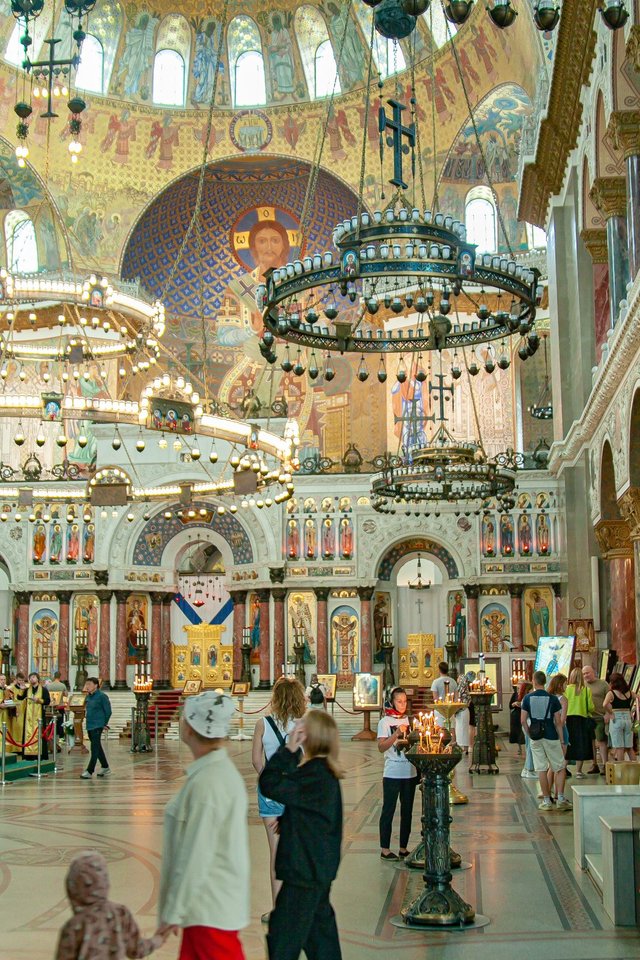Report No141. Interiors of St. Nicholas Naval Cathedral in Kronstadt. Отчёт о поездке № 141. Интерьеры Морского собора Святителя Николая в Кронштадте

Hello everybody! Today I am publishing the second part of the photo collection, which is the result of my trip to St. Petersburg last year. That time we traveled around Kronstadt and looked into the Naval Cathedral.
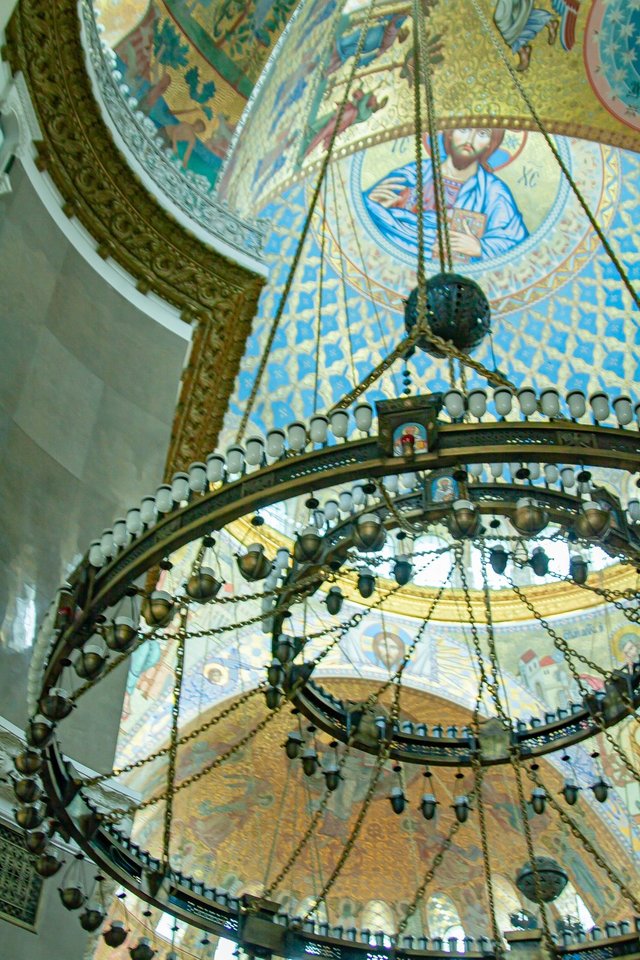
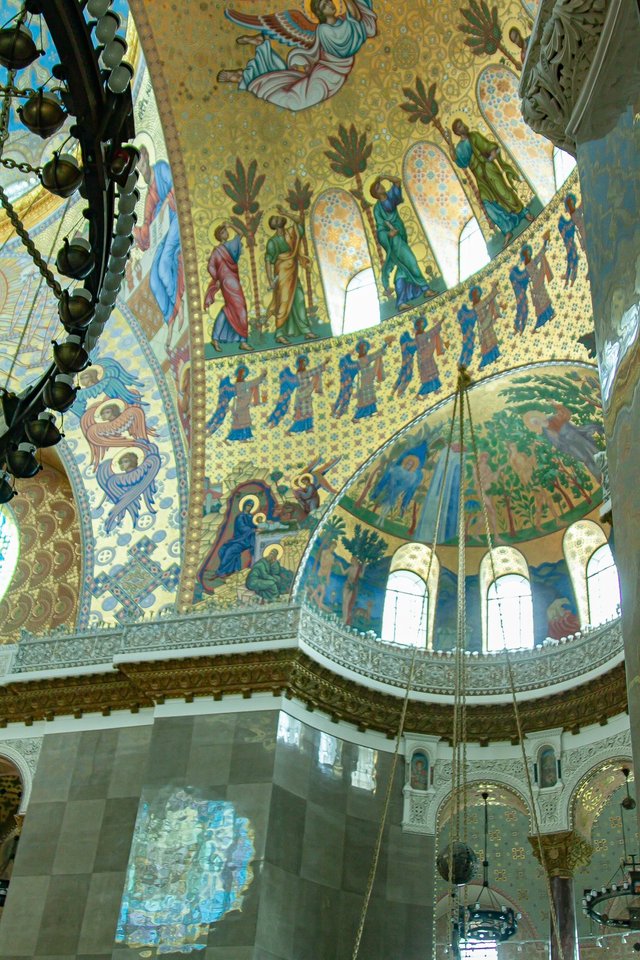
ONLINE REFERENCE: The Naval Cathedral of St. Nicholas the Wonderworker in Kronstadt is the largest naval cathedral of the Russian Empire, recognized as a UNESCO World Heritage Site. Today it is the main naval temple of Russia. St. Nicholas Naval Cathedral was built in the fortress city of Kronstadt by decree of Nicholas II in 1903. The Emperor himself was present at the laying of the first stone, and after the solemn ceremony, together with his entourage, he planted 32 oak trees in the square near the cathedral.
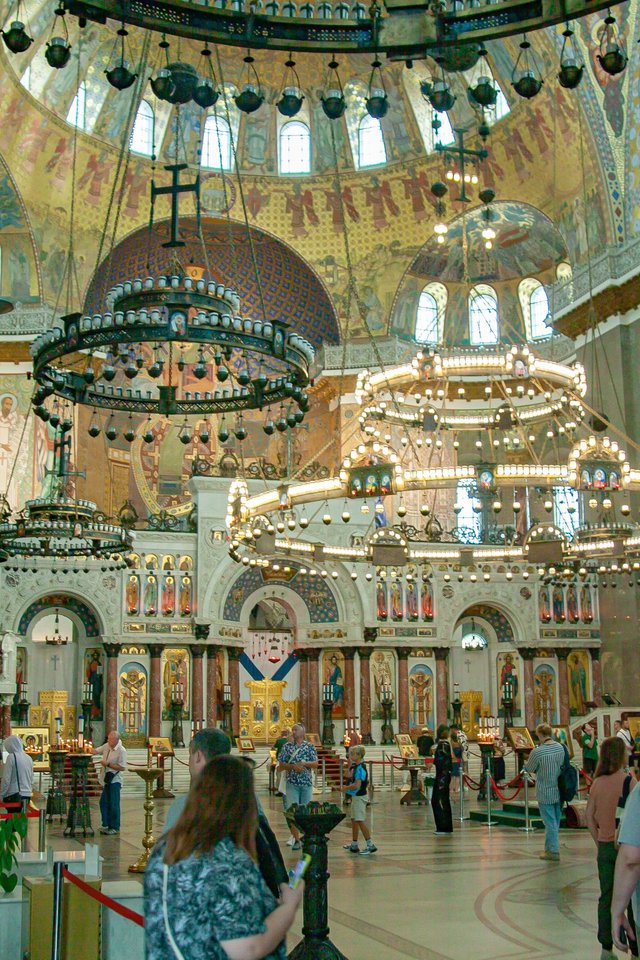
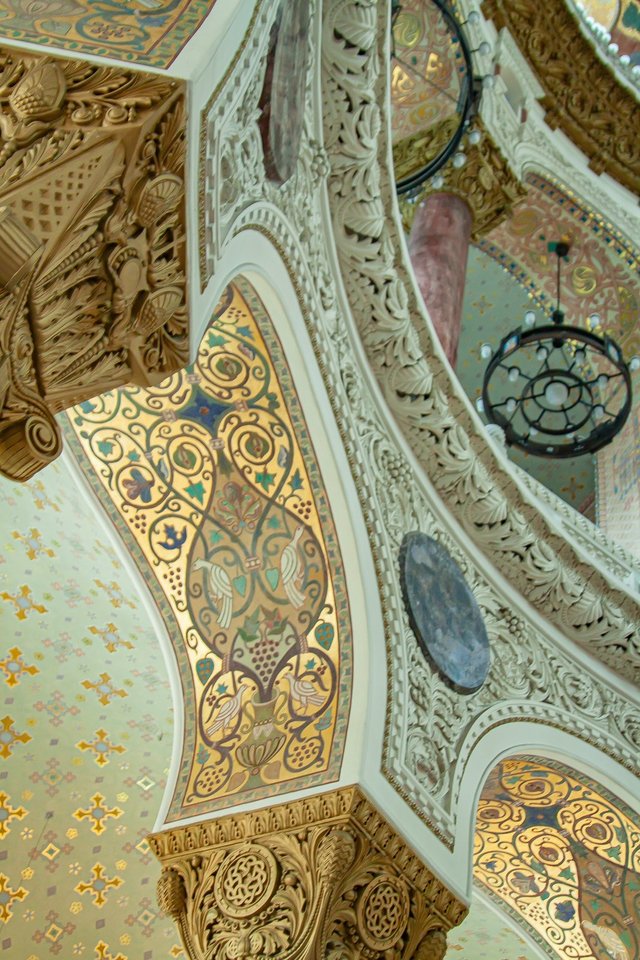
The cathedral, of course, is impressive. It is truly huge, both from the outside and from the inside. And the first thing that catches the eye of a parishioner is not even Orthodox shrines and an iconostasis, but an incredibly large chandelier suspended above the main hall of the temple.

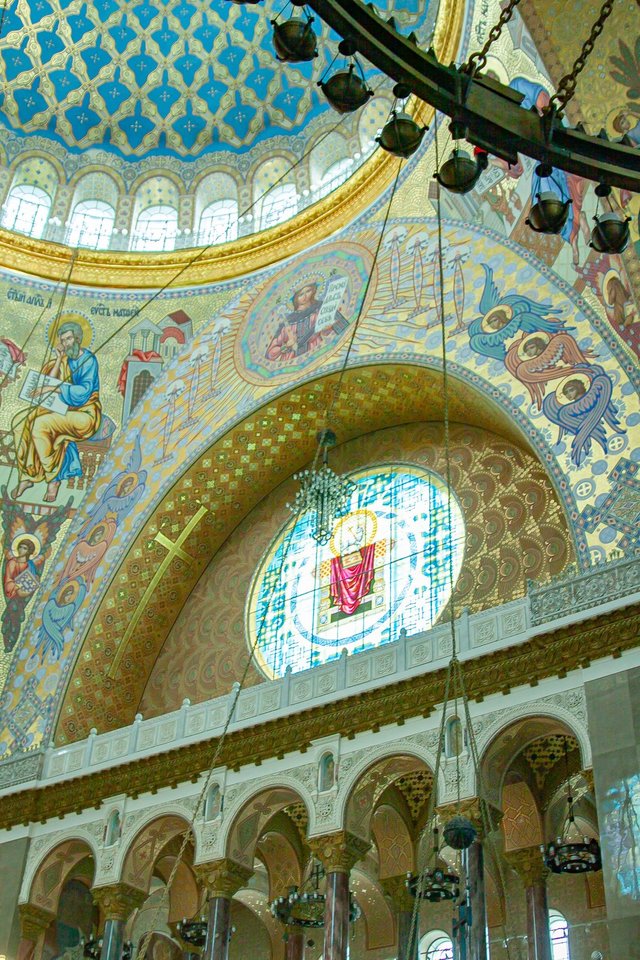
I didn't find any information about this chandelier on the Web, but as a person who has personally visited this cathedral, I can't help but note that the huge structure gives the impression of lightness and openwork. Its mass does not put any pressure on visitors at all, on the contrary, there is a feeling that it is made of light cobwebs, not metal.
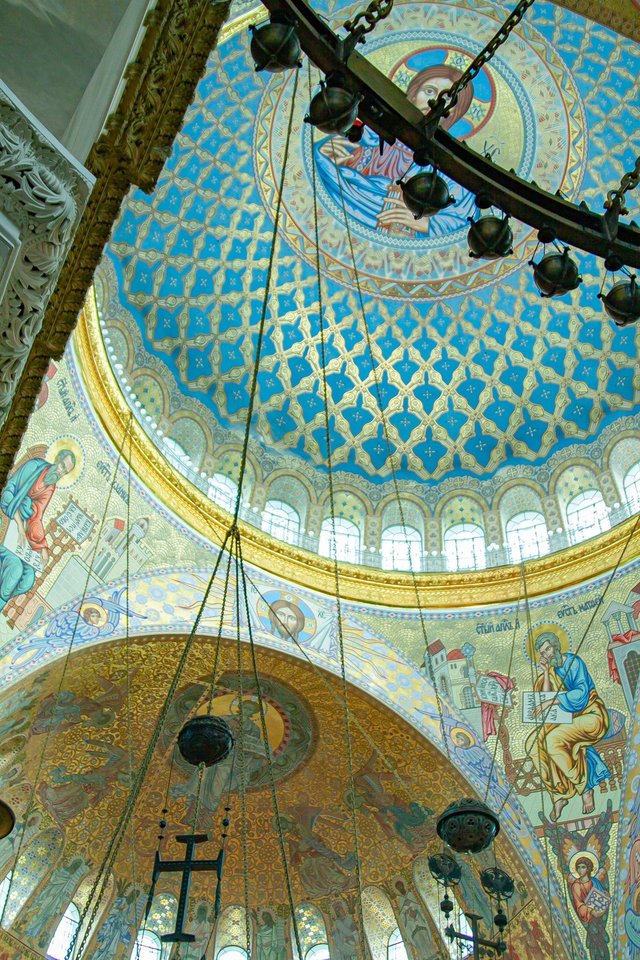
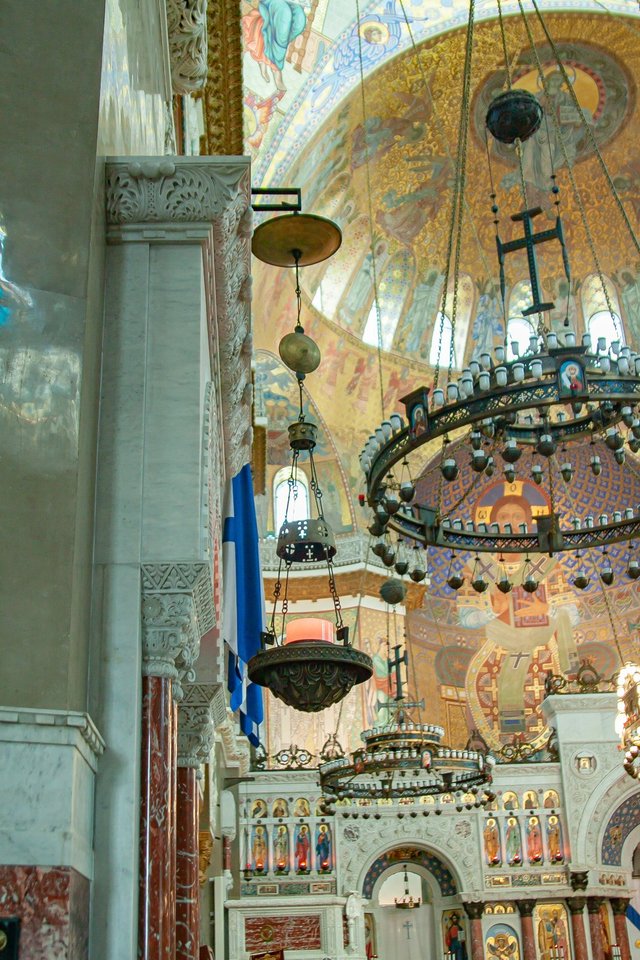
Along the perimeter of the chandelier there are lamps with soft, soothing light. It seems that candles used to be placed there instead of electric lamps, and for sure there is still some kind of mechanism that lowers the chandelier down.
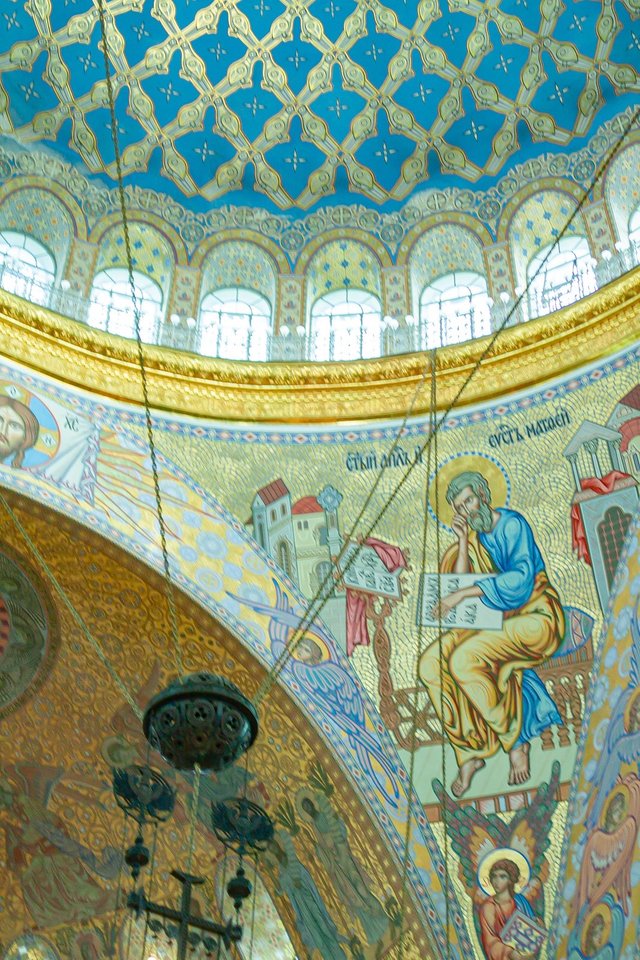
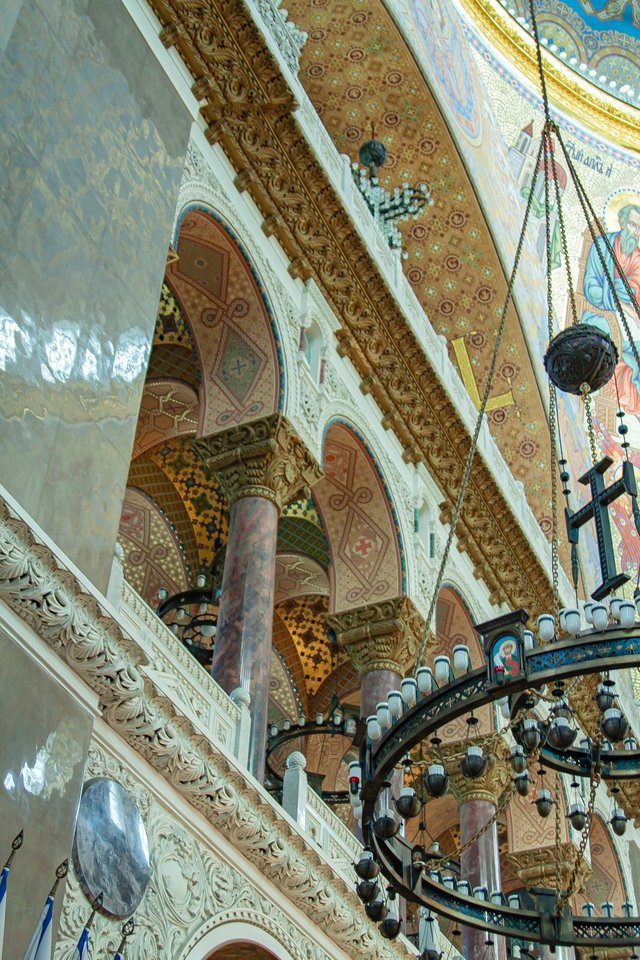
There are always a lot of tourists in the temple. In addition to periodic worship services, a lot of time is devoted to ordinary onlookers coming and taking pictures inside the cathedral. I was a little surprised that women walk inside the temple without headgear. However, there is probably some kind of unspoken agreement between the clergy and tourists when such secular visits are allowed. I often saw the lack of hats for ladies in other churches in St. Petersburg, so I was not very surprised at that time.
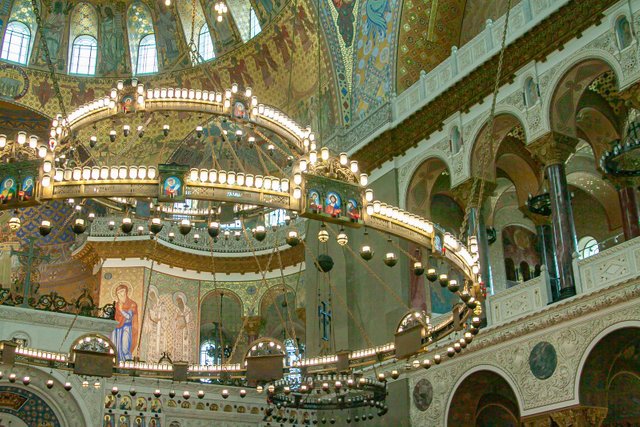
I liked the mosaic floors of the cathedral. The drawing here is simple, but quite elegant, also designed in the style of ancient Byzantium. The decoration of the walls and ceilings is not as pretentious as, for example, in St. Isaac's Cathedral, but the murals are surprisingly bright and colorful.
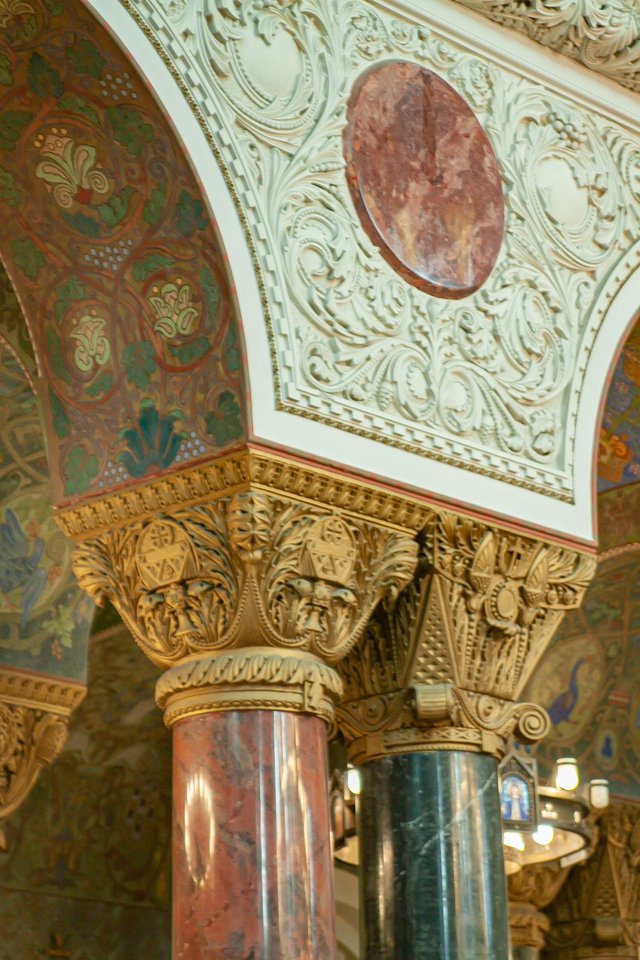
Tomorrow we will continue to walk around Kronstadt. Ahead of us there is a marina with real naval ships, as well as an open-air exhibition with various swimming equipment. And that's it for today!

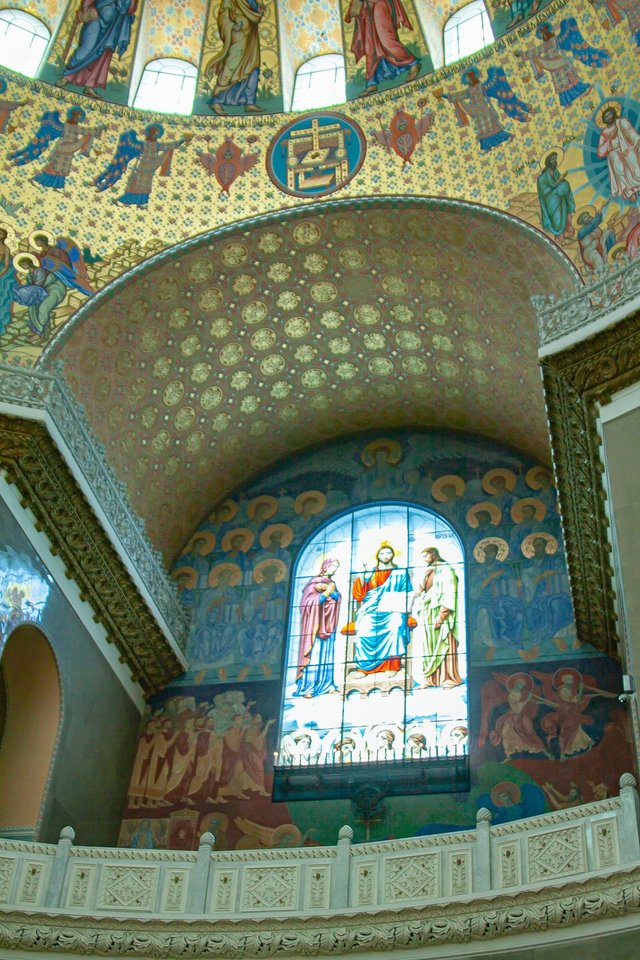
Привет всем! Сегодня я публикую вторую часть фотоподборки, которая является результатом моей прошлогодней поездки в Петербург. В тот раз мы путешествовали по Кронштадту и заглянули в Морской собор.
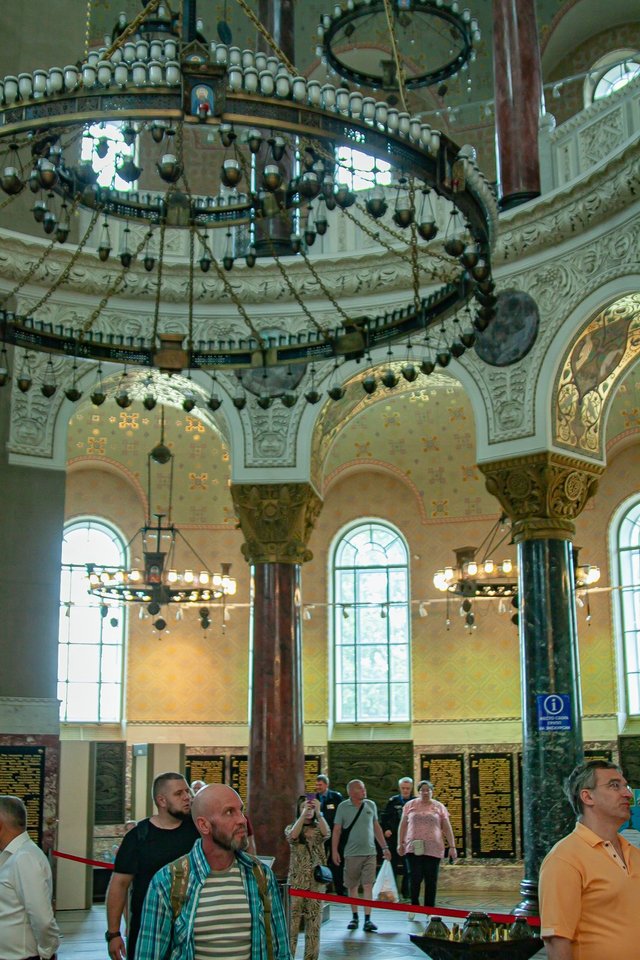
СПРАВКА ИЗ СЕТИ: Морской собор святителя Николая Чудотворца в Кронштадте — крупнейший морской собор времен Российской империи, признан памятником всемирного наследия ЮНЕСКО. Сегодня это главный военно-морской храм России. Никольский Морской собор построен в городе-крепости Кронштадт по указу Николая Второго в 1903 году. Император сам присутствовал при закладке первого камня, а после торжественной церемонии вместе со своим окружением посадил в сквере около собора 32 дуба.
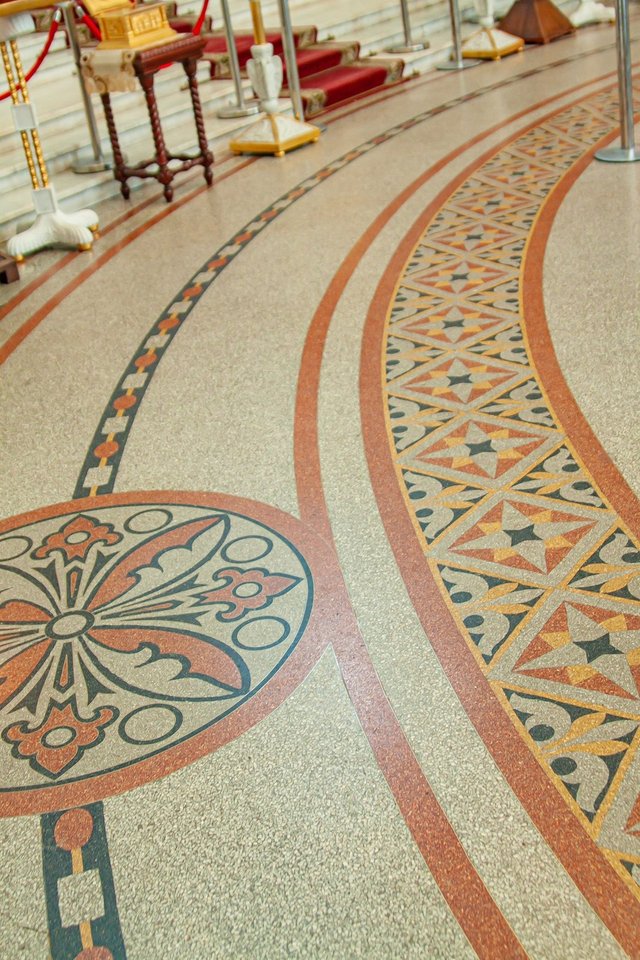
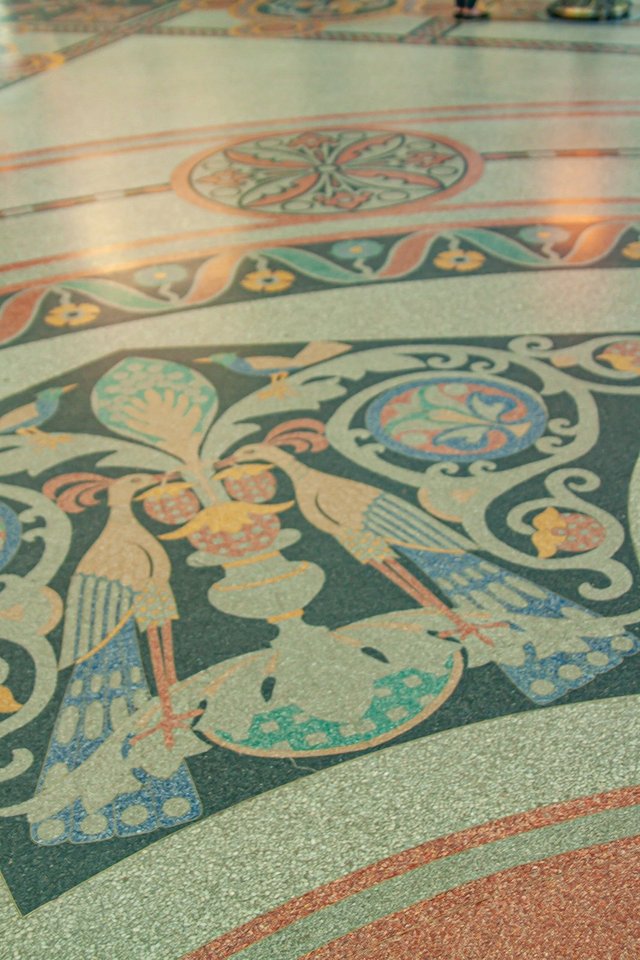
Собор, конечно же, впечатляет. Он воистину огромен, как снаружи, так и изнутри. И первое, что бросается в глаза прихожанину, это даже не православные святыни и иконостас, а невероятных размеров люстра, подвешенная над основным залом храма.
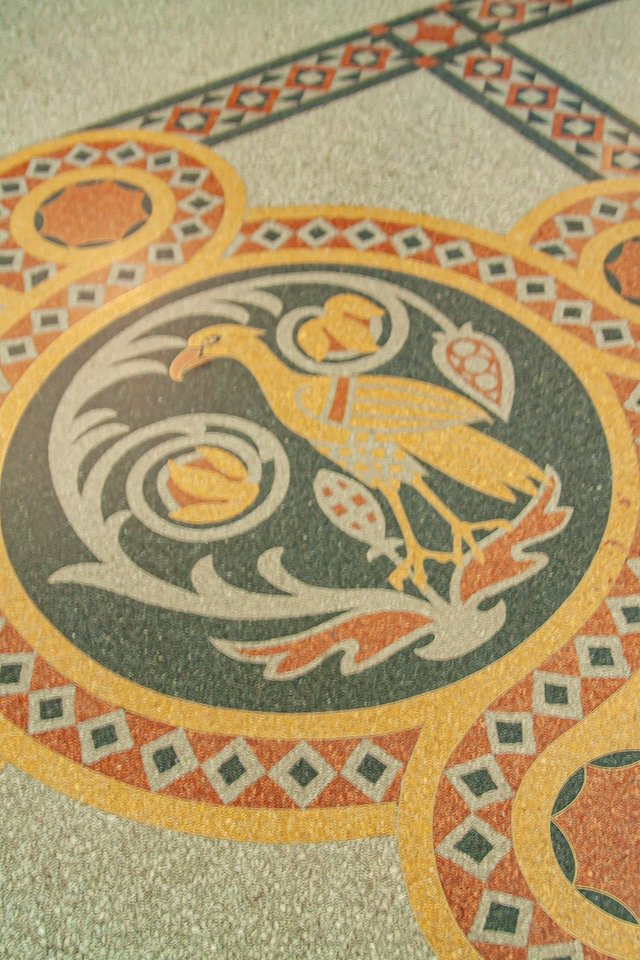
Я не нашёл в сети информации об этой люстре, но как человек, который лично побывал в этом соборе, могу не отметить, что огромная конструкция производит впечатление лёгкости и ажурности. Её масса совершенно не давит на посетителей, наоборот, возникает ощущение, что она выполнена из лёгкой паутины, а не из металла.
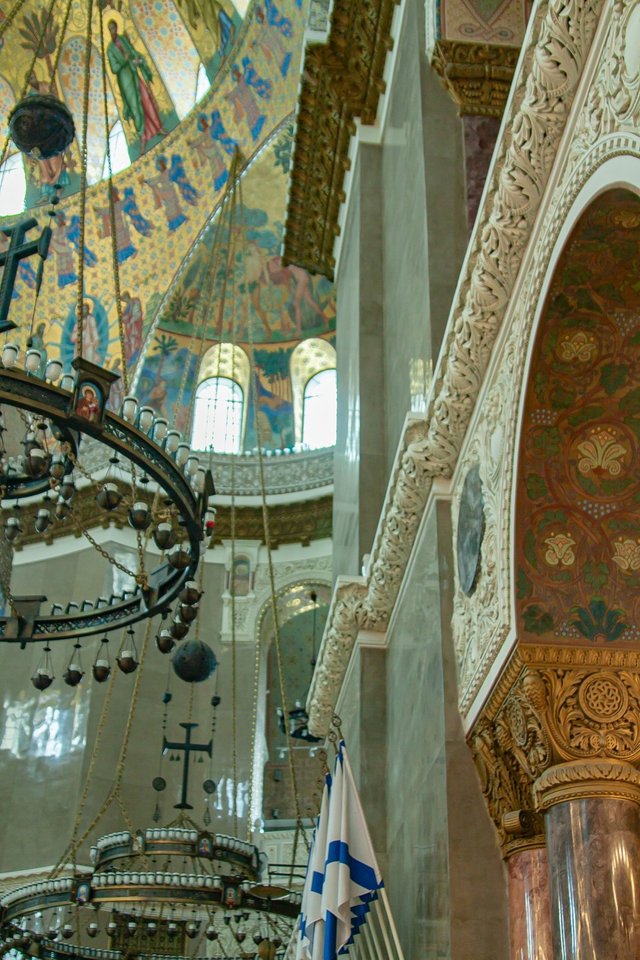
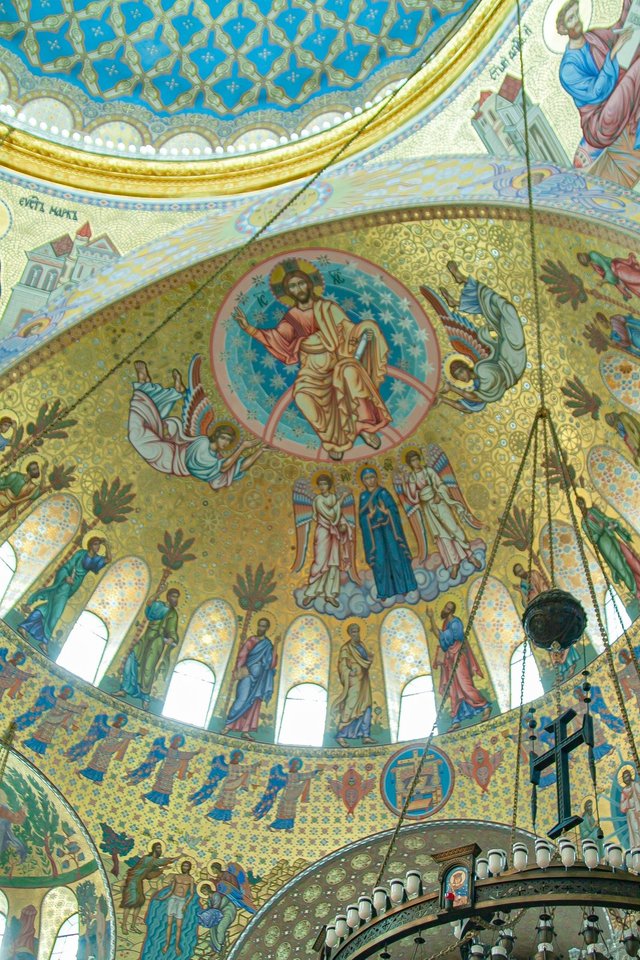
По периметру люстры расположены светильники с мягким, умиротворяющим светом. Создаётся впечатление, что раньше вместо электрических ламп там располагались свечи, и наверняка до сих пор существует какой-то механизм, который опускает люстру вниз.
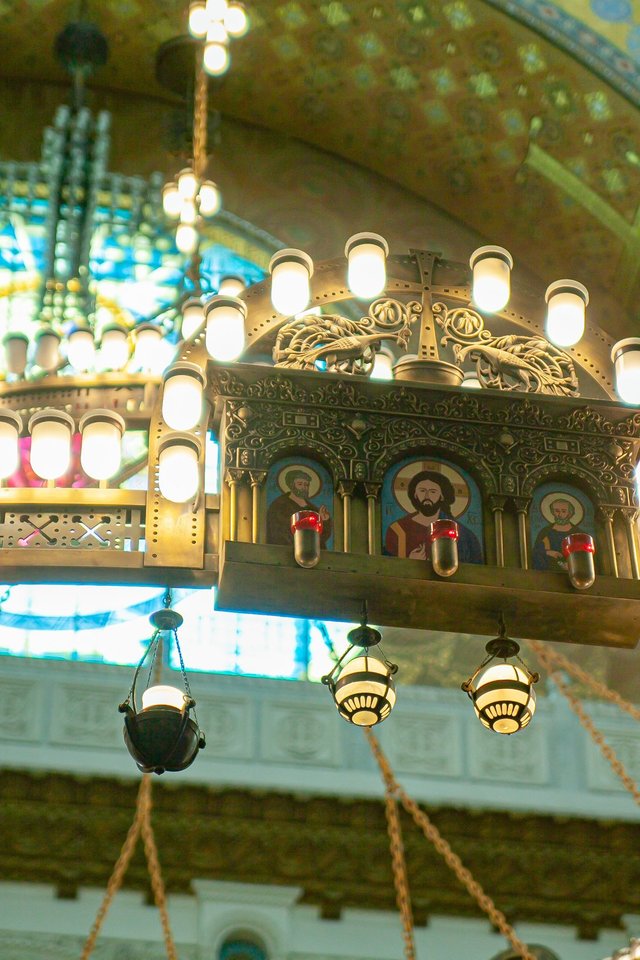
В храме всегда много туристов. Помимо периодических богослужений здесь много времени уделяется тому, чтобы простые зеваки приходили и фотографировались внутри собора. Меня немного удивило, что женщины проходят внуть храма без головных убооров. Впрочем, наверняка есть некий негласный договор между священнослужителями и туристами, когда такие светские посещения разрешены. Отсутствие головных уборов у дам я часто видел в других храмах Петербурга, поэтому не сильно удивился в тот раз.
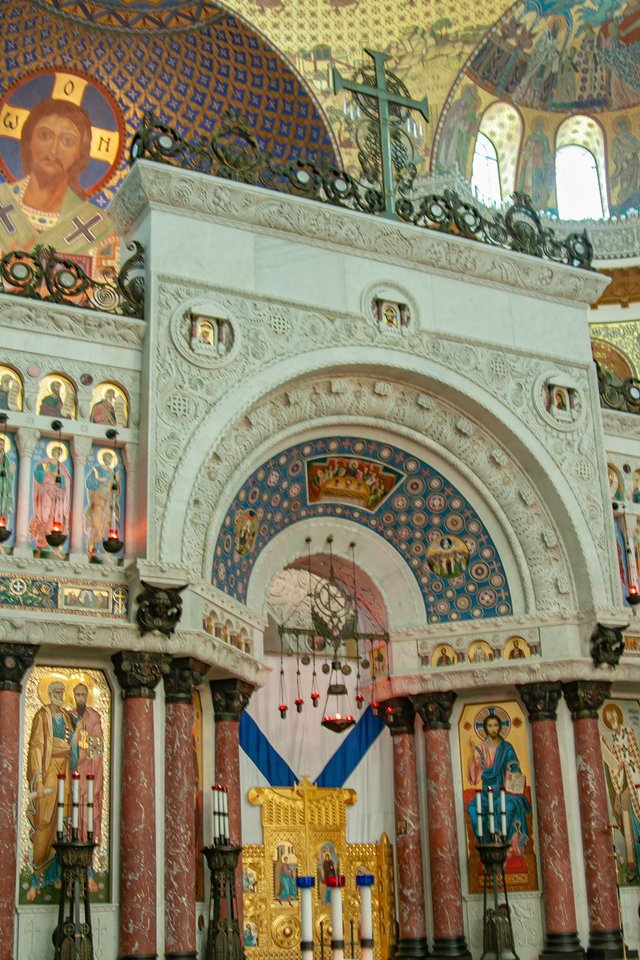

Мне понравились мозаичные полы собора. Рисунок здесь простой, но довольно изящный, так же выдержанный в стилистике древней Византии. Отделка стен и потолков не такая вычурная, как, например, в Исаакиевском соборе, но росписи на удивление яркие и красочные.
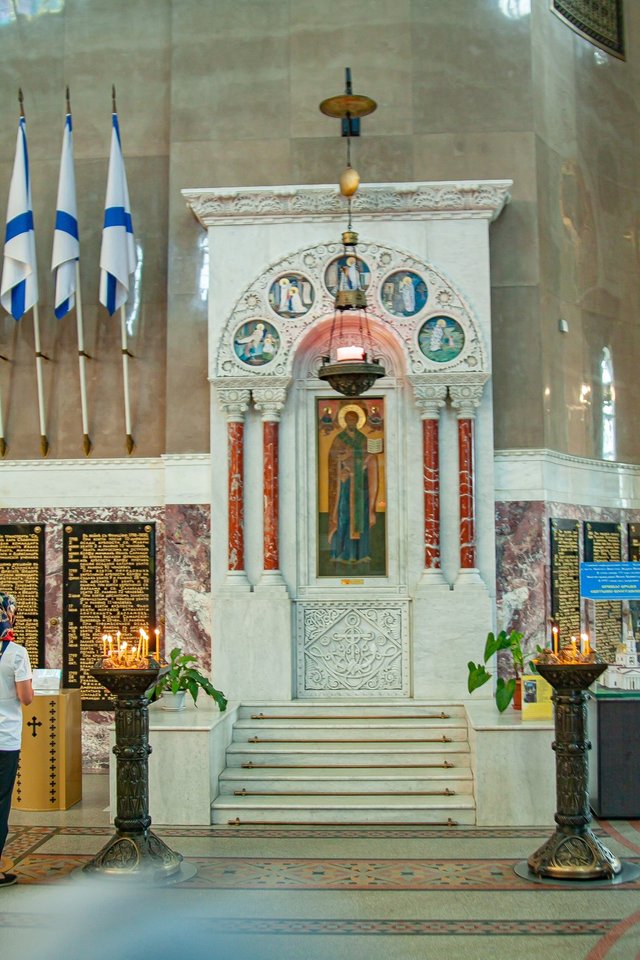
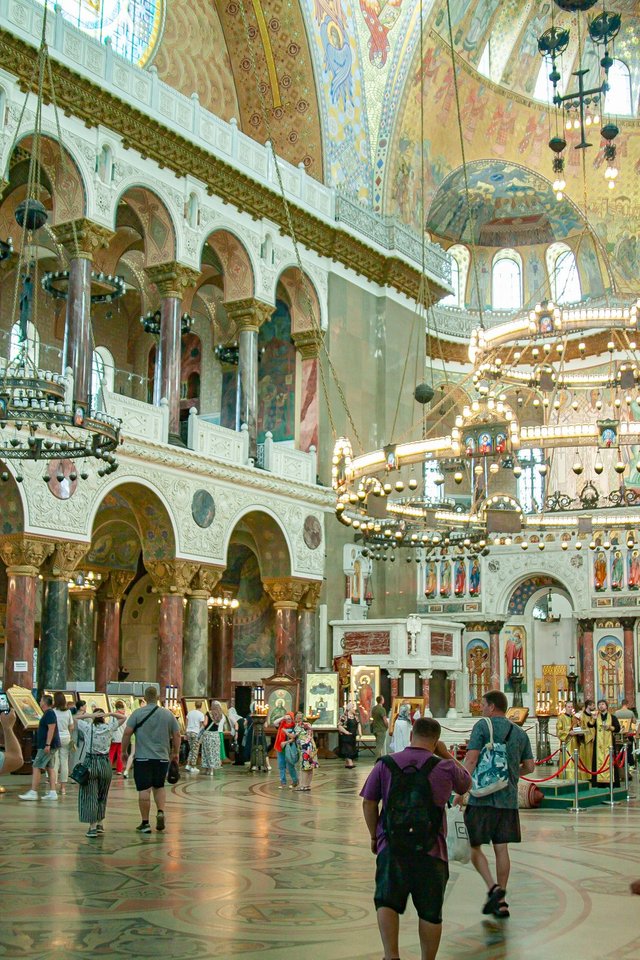
Завтра мы продолжим прогуливаться по Кронштадту. Впереди нас ждёт пристань с настоящими морскими кораблями, а также выставка под открытым небом с различными плавательными аппаратами. А на сегодня у меня всё!
